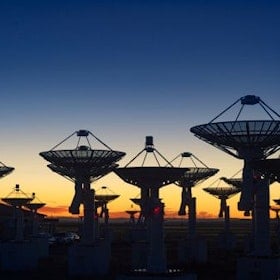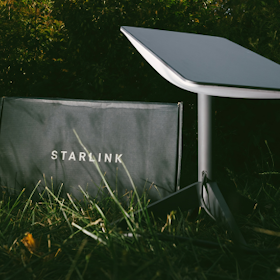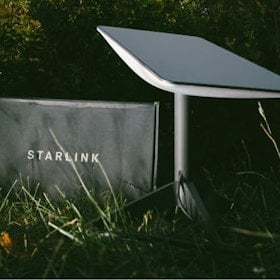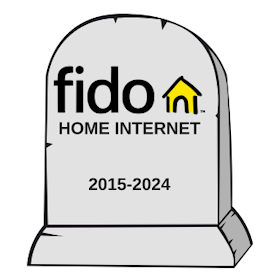
Article Summary
Fibre internet uses strands of glass or plastic to transfer data through pulses of light. This technology allows fibre internet to provide users with upload and download speeds of up to about 1Gbps. Fibre internet is currently the best type of internet, topping cable, DSL, and satellite in terms of speed and reliability.
If you’ve been shopping for the best internet, you’ve probably run into fibre internet. Fibre internet is the current king of broadband internet connections. But what exactly is fibre internet and what makes it so good?
What is Fibre Internet?
Fibre internet is a type of broadband internet that utilizes fibre optic cables to transfer data. Unlike coaxial cable which transfers electrical signals through primarily copper conductors, optical-fibre cables are made up of strands of thin glass or plastic that transfer light signals from point to point. That light can carry a ton of data with it and travel long distances without degrading. Fibre internet can get as fast as 1Gbps, even faster in certain instances.
Major Canadian internet service providers like Rogers, Telus, Bell Canada, SaskTel, and MNSi all have build and are continuing to grow their fibre internet networks. Smaller providers can purchase service wholesale from these fiber networks to resell to their customers.
What Makes Fiber the Best
Fibre internet can quickly transfer all the data you receive and send. A common way to look at fibre internet is to think of hoses and water transfer. A bigger hose can allow more water to travel through at one time than a smaller hose. Think of fibre internet as giving you a bigger hose for your internet connection. That big hose also allows for more symmetrical connections—upload and download speeds are about the same. This is something you don’t see with other types of internet connections where most of the bandwidth is reserved for download speeds.
Fiber to the Home and Fibre to the Node
When shopping for fibre internet, you should be aware of the difference between fiber to the home (FTTH) and fibre to the node/neighborhood (FTTN). FTTH gets you a true fibre connection directly to your home. FTTN connects to a node or specific point in your neighborhood and from there another connection type (usually cable) finishes the connection.
If you have a choice, you want FTTH. This will get all the best aspects of fibre with no compromise in service. FTTN is still a decent choice, but you will not get the full force of fibre. Not to mention, you’ll also inherit some of the downfalls of coax cable internet.
Fibre Vs. Cable
If fibre internet has anything close to resembling a rival for home internet connections, it’s cable. Cable internet uses the same coax cables that provide homes with cable TV. These connections use copper wiring to transfer data via electrical signals. Unlike fibre and light transfer, electrical signals cannot travel as far without losing quality, and they cannot carry as much data with them—cable provides a smaller hose for your internet.
Fibre generally provides users with much faster and more reliable internet than cable can. However, that doesn’t mean that cable is bad. In fact, cable provides more than adequate speeds which can typically reach up to 400Mbps. Some providers may even be able to get you 1Gbps download speeds, but upload speeds will remain much lower. Cable is much more widely available as it works off of the same cable TV’s existing infrastructure.
Fibre might be the best, but because of wider availability, adequate speeds, and cheaper prices, cable might be the better choice for your household.
Fibre Vs. DSL
There’s really no contest here: fibre is much faster than DSL. In almost all cases, we’ll recommend fibre over DSL. The few cases where you should consider DSL over fibre is if the better internet connection type just isn’t available to you (but you should look into cable before getting a DSL), you are looking to spend less on your internet, or you just don’t really use the internet very much.
Fibre Vs. Satellite
Satellite’s might be up in space, but as far as internet connections go, fibre is miles above it. Lower speeds and long latency—the amount of time between you requesting data, and that data getting to you—makes satellite very inferior to fibre. However, if you are in a rural area with little choice in broadband connections, satellite might just be your best (and only) bet.
The good news is that advances in satellite internet are making the connection type much better than it once was. The pending release of Starlink in both Canada and the US is going to provide satellite internet that could rival, if not better, fibre internet.
Related Articles
Find Better Internet and Phone Plans
Hundreds of internet plans unpacked. All the facts. No surprises.
Internet Providers by Provinces and Territories
- Internet in Alberta
- Internet in British Columbia
- Internet in Manitoba
- Internet in New Brunswick
- Internet in Newfoundland and Labrador
- Internet in Northwest Territories
- Internet in Nova Scotia
- Internet in Nunavut
- Internet in Ontario
- Internet in Prince Edward Island
- Internet in Quebec
- Internet in Saskatchewan
- Internet in Yukon Territory











































